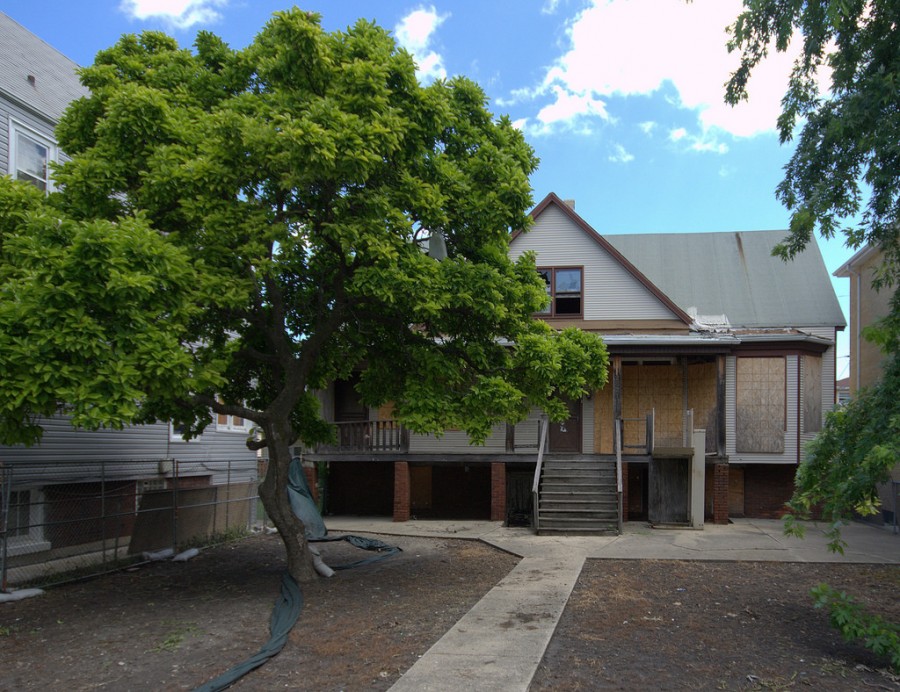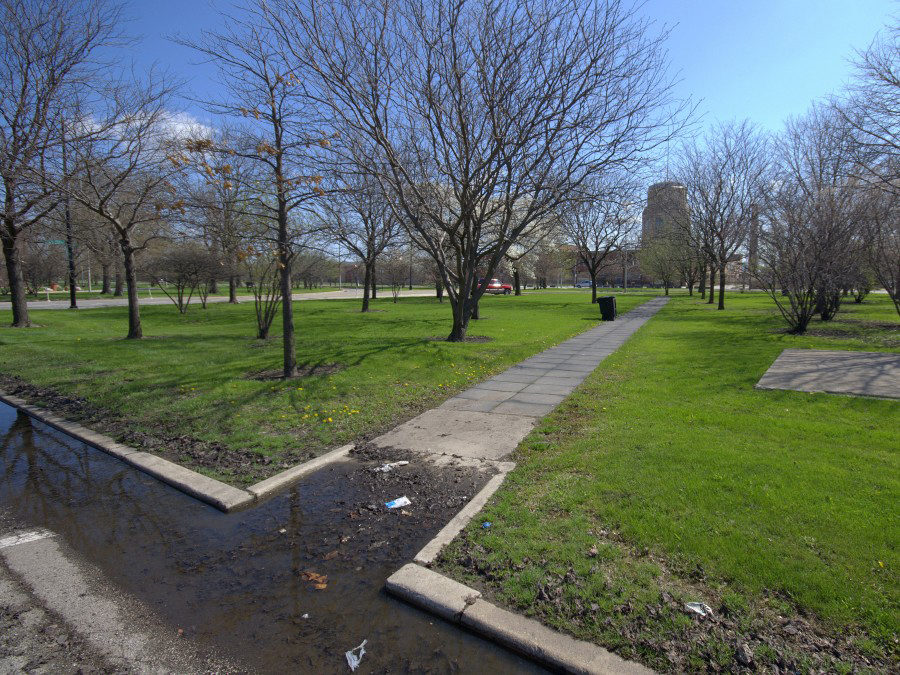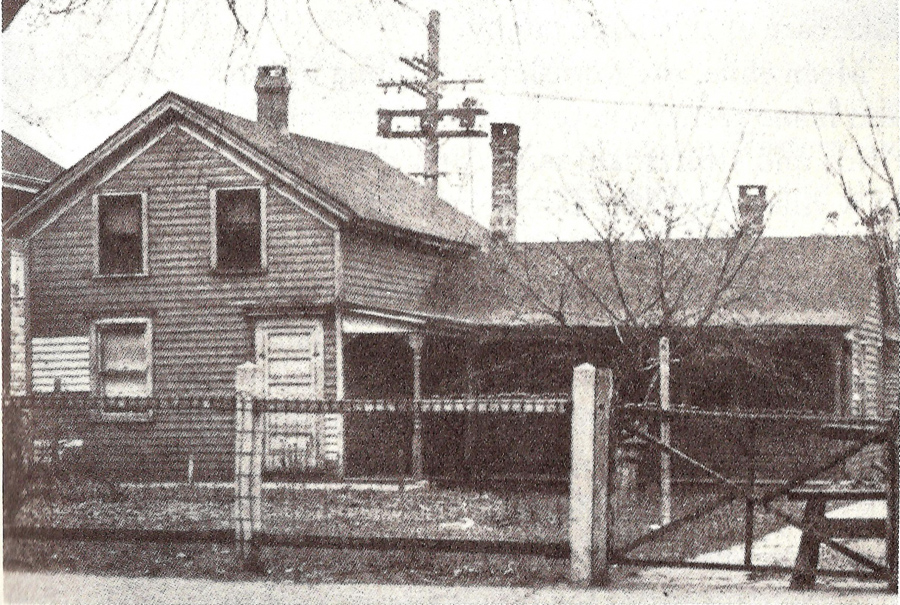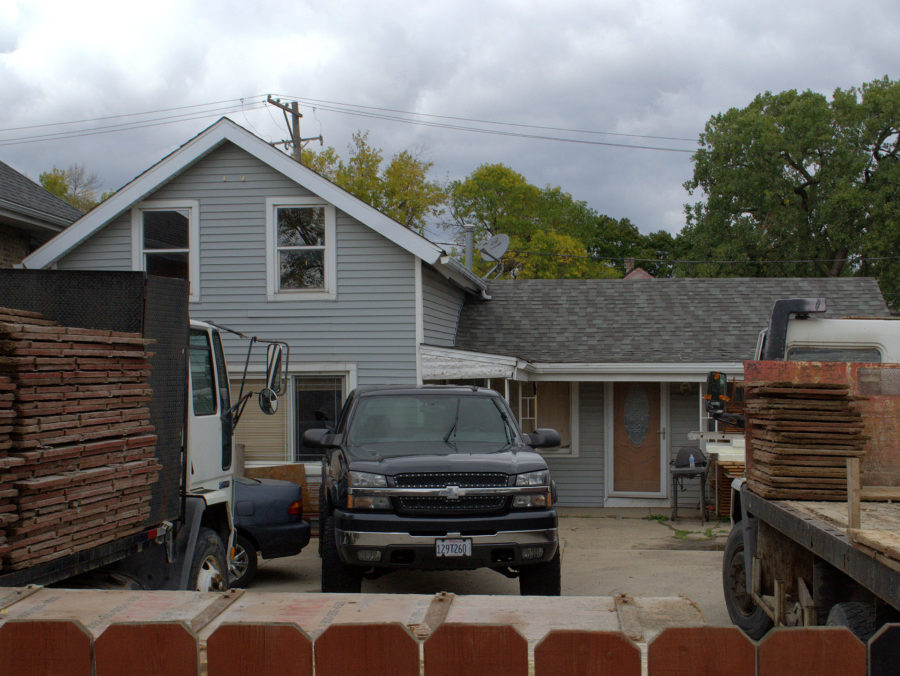 Gabriel X. Michael
Gabriel X. Michael
July 24, 2014

Viewing east towards front facade of 2821 North Avers Avenue house under demolition. Gabriel X. Michael/Chicago Patterns
After some time on the city’s Demolition Delay Hold List, the review period has ended and demolition will be proceeding for the “orange-rated” house at 2821 North Avers Avenue. I recently visited one late afternoon to check on the site, and photograph the current state of the structure.
Looking into available public records, conflicting information exists regarding the actual age of this building: by all real estate-related and Cook County Assessor’s Office information that can be obtained, this house was built in 1908. However, the City of Chicago’s Historic Resources Survey–a ground-level, detailed effort completed nearly 20 years ago–also indicates this as a significant, “orange-rated” structure, circa 1880s.
Continue reading »
 Gabriel X. Michael
Gabriel X. Michael
July 17, 2014

View of original northwest corner of Sacramento Square, now part of the West Town Academy, from the Sacramento Boulevard east service drive. Gabriel X. Michael/Chicago Patterns
Sacramento Square
This square is situated at an important transition point in the Chicago boulevard system, where Humboldt Park’s Sacramento Boulevard to the north connects into Garfield Park to the west via Franklin Boulevard. There is little green space at this turning point for the boulevard system, historically overrun by intersecting roadways and industrial traffic. It only retains one of its original corners, the southwest at Whipple Street and the Franklin Boulevard south service drive, and has some nondescript, while pleasantly shady, clusters of trees and shrubs.
Continue reading »
 Gabriel X. Michael
Gabriel X. Michael
July 16, 2014

Viewing east on Franklin Boulevard from Kedzie Avenue, with Sacramento Square in the background. Gabriel X. Michael/Chicago Patterns
Chicago’s “Emerald Necklace,” our citywide boulevard system, was established in 1869 when the state legislature created governmental organizations to manage the development and maintenance of Chicago’s desperately needed new parks. One of these, the West Side Park System, was organized to create parks on Chicago’s farmland borders (presently west of Western Avenue) to spur middle- to upper-class residential development migrating out from the city center, and serve its growing inner-city population with recreational “pleasure grounds.”
Continue reading »
 Gabriel X. Michael
Gabriel X. Michael
April 30, 2014

4618 West Armitage Avenue, circa 1940. Photo courtesy of and copyright John Drury, Old Chicago Houses (1)
A few months ago at the Chicago Public Library, I came across the fascinating book Old Chicago Houses written by John Drury and published by University of Chicago Press in 1940. One particular story of an old Chicago farmhouse struck me: the James Von Natta home at 4618 West Armitage Avenue in present-day western part of the Hermosa neighborhood.
UPDATE: On October 2nd, 2014, a demolition permit was issued for the house at 4618 West Armitage Avenue (via Chicago Cityscape). This structure was not a part of the City of Chicago’s Historic Resources Survey in 1985, which may have at least provided a 90-day demolition delay review period, so it has seemingly fallen through the cracks of municipal historic preservation. As of today, the house was still standing in its same condition, with no apparent signs of demolition preparation yet (see photograph below). We will keep you notified of further developments on this disappointing turn of events.

Continue reading »






